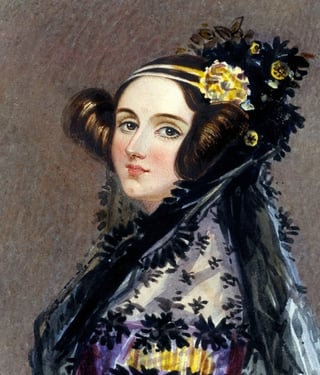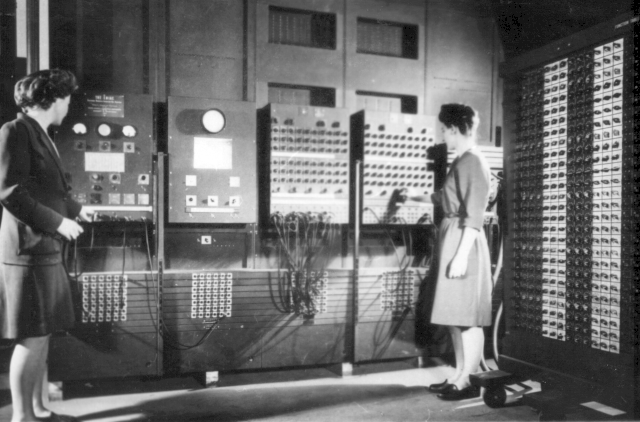For young women and girls, female role models in STEM professions can increase their desire to pursue STEM careers. One study found that girls do better on science tests when their textbooks include images of female scientists. A recent survey by Microsoft “found that young girls in Europe become interested in so-called STEM subjects around the age of 11 and then quickly lose interest when they're 15.” Researchers pointed to “conformity to social expectations, gender stereotypes, gender roles and lack of role models” as potential reasons for this change.
Based on this data, one of the most important things we can do to encourage girls to pursue their interest in STEM is to expose them to female role models. Luckily, the history of computer science is women.
Influential Women in Computer Science
Here are just a few of the many wonderful women who have contributed to the history of STEM over the past 200 years.

Ada Lovelace
Ada Lovelace (1815–1852) is often recognized as the first computer programmer in the world for her work translating and adding comments to an article by mathematician and inventor Charles Babbage and recognizing that computers were capable of more than just calculation. She even has a computer programming language named after her.
Edith Clarke (1883–1959) was the first woman to earn an Electrical Engineering degree from MIT, and went on to receive a patent for her “graphical calculator,” which was later used to solve the problem of transcontinental telephone communication.
Grete Hermann (1901–1984) published the foundational paper for computerized algebra and wrote an early critique of quantum physics that might have changed the way quantum physics is viewed today.
Hedy Lamarr (1914–2000) and composer George Antheil developed a radio guidance system for Allied torpedoes using spread spectrum and frequency hopping technology to reduce the threat of jamming by enemy forces. The principles of her work are now incorporated into modern WiFi, CDMA and Bluetooth technology.
 U. S. Army Photo: Betty "Jean" Jennings and Frances "Fran" Bilas setting up the ENIAC.
U. S. Army Photo: Betty "Jean" Jennings and Frances "Fran" Bilas setting up the ENIAC.
Women of ENIAC (1946) — namely Kay McNulty, Betty Snyder, Marlyn Wescoff, Ruth Lichterman, Betty "Jean" Jennings and Francis "Fran" Bilas — programmed the first all-electronic, programmable computer during World War II.
Katherine Johnson (1918–) calculated trajectories and launch windows for NASA missions, including America’s first human spaceflight in 1961, the orbital missions for John Glenn and Apollo 11.
Grace Hopper (1906–1992) invented the first compiler for a computer programming language, which led to the first programming language that used words instead of numbers, COBOL.
Sister Mary Kenneth Keller (1913 (?)–1985) helped create the computer language BASIC, which made it possible for anyone to write custom software, and was the first American woman to earn a Ph.D. in computer science.
Erna Schneider Hoover (1926–) designed a switching system for phones, which was the first “reliable device to use computer techniques,” and was awarded one of the first software patents for her work.
Radia Perlman (1951–) invented Spanning Tree Protocol (STP), which enabled the creation of the internet we know today.
Susan Kare (1954–) created many of the interface elements for the Apple Macintosh and was an early pioneer of pixel art.
Carol Shaw (1955–) was the first female video game designer, working for Atari from 1978–1984.
Deborah Estrin (1959–) pioneered the development of systems that collect and analyze real-time data about the physical world, a key component of the Internet of Things (IoT).
These are just a few of the many inspiring women who have shaped the world of STEM and computer science. As one NPR article put it, “Every time you write on a computer, play a music file or add up a number with your phone's calculator, you are using tools that might not exist without the work of these women... And perhaps knowing that history will show a new generation of women that programming is for girls.”
Which women did we miss? Share your STEM heroines in the comments below.

